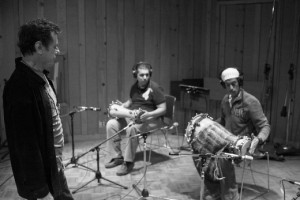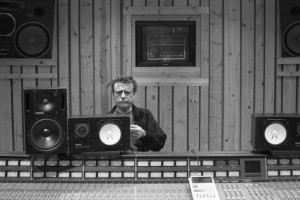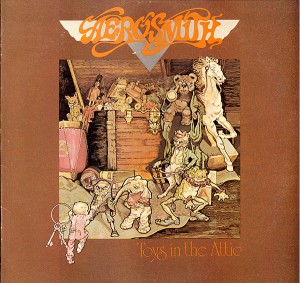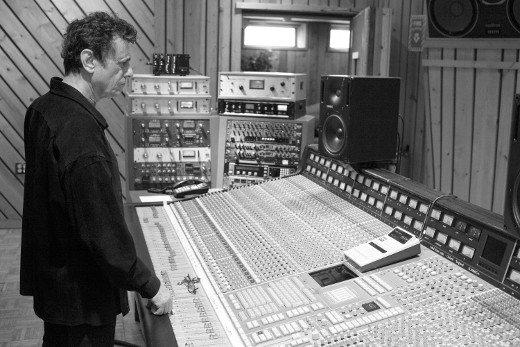Icons: Learning To Fly III — The Mind of Jay Messina
Whether you’re a world-class recording engineer or a first-year audio student, there is something to be learned from every artist with whom you work, and every recording studio you enter.
For veteran recording engineer Jay Messina, being open-minded is an essential part of the job: “If you take the position that you know everything,” he says, “then that’s all you’ll ever know.”
When Messina takes on a recording project, he isn’t just signing up for the block of studio time reserved, he’s making a commitment to completely delve into the project, throwing caution to the wind. And by the time the machines are in “record,” he has already spent days preparing — mentally, socially and sonically — for the gig.
For nearly half a century, Messina has been using his unique blend of Brooklyn street smarts and technical savvy (though he won’t admit it) to record some of the world’s most commercially successful artists. His credits include albums with Aerosmith, Cheap Trick and Miles Davis, to name just a few. At this point in his career, Messina’s accolades — perhaps most notably, over 20 Gold records — alone serve as a testament to the value of his method and expertise. But that’s only part of his story.
We sat down with Messina at his New York City apartment to find out just how he captures and creates high-quality sound. Much to our chagrin, Messina’s professional advice doesn’t revolve around exact findings, as audio practicums often do (he doesn’t have much patience for “mic A for instrument B” talk, or for otherwise stringent or restrictive methodologies), but gravitates instead toward methods of preparation, communication and discovery.
Thus, right off the bat, we found ourselves adhering to one of the renowned engineer’s most important instructions: “Open your minds, and get ready to absorb the knowledge.”
When preparing for a recording session, what’s the first thing you do?
My homework. And by that I mean, if I know I’m going to be working with a band, I’ll do what I can to know as much as I can about their music before we go into the studio — I go see them live, get their most recent CDs, ask them what they liked and didn’t like about their previous records.
I’ve learned a lot from going to see the artist perform in concert. If I don’t get to know a band, I’ll end up going in and working with a bunch of strangers. The tendency is that the band is on one side, then there is the glass, and on the other side is the technical people. That glass can make for a separation in personality.

The glass never gets in Messina’s way of realizing the artist’s vision. (Photo Credit: Ted Greenberg)
A crucial part of the recording process is capturing the best possible performance from the artist. You want to enable them to do their best, and the more comfortable everyone is with one another, the easier it is for that to happen. If you get a chance to meet the band and hang out with them a little bit, by the time you get into the studio, the band may treat you as part of the group.
Once you’ve established a personal relationship, an artist is more apt to listen to your suggestions. If you’re going in and you’re strangers, you might make a request and they might do it, but they’re more likely to be uptight about it.
Can you tell me about a time when you established a personal relationship or connection with an artist or a band?
The first time I met Slash [of Guns N’ Roses], he’d just gotten into town and Jack Douglas [the legendary rock producer] told him to contact me. I had him come by my apartment first and then we went out to grab some drinks.
By the time we got to the studio, we were kind of like buddies already. We’d gotten any possible discomfort out of the way.
After you’ve done your homework on an artist or band, what’s next?
If I know I’ll be recording in a studio that I’ve never been to, I’ll always go in the week before and ask to have the assistant to meet me there — it’s important to get that relationship with the assistant going — and ask, “Where’s a good place to set up the drums?”
It’s important for me to get his/her input on things, regardless of whether or not I’ll use them. A lot of times, I’ll ask the assistant what microphone they never use for room mics, then I’ll go ahead and set that one up. Nine times out of 10, I’ll find out why it’s the one they don’t use. But if I can get that one out of 10 to work, either on its own or with something else, I’ll have learned something.
If you can get something in the recording that sounds a little different, and it’s of quality, most people will react to it in a positive way. What you find in a real room is not going to be on a plug-in.
After getting to know both the artist/band and studio, do you do any kind of technical preparation?
Always. A few days before the session, I’ll email the studio about my preferences for microphones and outboard gear. I’ll also discuss with the assistant what mics are available, if there are any issues, etc…
For a room I haven’t been in, I’ll bring in a few reference CDs that I know sound great. The first thing I do is listen to those for about 10 or 15 minutes so my brain can learn what good sounds like in there.
When using a reference, you start with something that you’ve always loved. Phil Ramone [the legendary producer] used to tell people to listen to all of the Simon & Garfunkel records to use as a reference for knowing what sounds right. After my first good take, I’ll go back and listen to the reference CD, and then, unless there’s a big surprise in a bad way, I know I’m OK.
What’s your approach on the day of the recording?
For me, it’s always been the same: I get to the studio a couple of hours before it’s downbeat time, before the band is paying for the time. I’ll also usually ask the band, or at least the instrumentalists, to meet me there well in advance — that will give me enough time to get any extra mics set up and make any necessary changes that I didn’t learn from talking to the band in advance.
The goal for me is to have fun for the day. When you’re having fun and you’re being productive, you’ll do your best work. If you’re not relaxed, it’s just going to rub off on everyone else, and you won’t even come close to doing your best.
What’s your mindset once the session gets going?
I like to make decisions when recording. When I started, the equipment [we were using at the time] forced us to make critical decisions during the recording session.
Today, I see musicians, engineers and producers who have the tendency to go with more takes, more passes, and leave the decisions for later. Let’s say three different mics are being used to capture a guitar sound: Unless it’s a rare occasion, I’ll get the mix I like between all of those mics and record it onto one track.
It’s the subtleness that makes it great. The options that Pro Tools provides can take away from the spontaneity of the moment whereas making decisions on the spot can be magic.
A lot of the time, I’ll print a reverb or delay on a vocal when it’s sounding great. The only way to guarantee that sound is to print the effects. If you love the sound, print it.
We’re not solving the hunger problem in the world. You have to take it seriously but still keep it in perspective. Just in general, the benefits of committing to something that sounds amazing far outweigh any of the negatives.
It’s an old story in recording — you do a rough mix and then go back to do a real mix, and the rough sounds better. How come? It doesn’t make logical sense, but it’s something about the spontaneity of it — the fact that you’re not picking it apart, but just going for it.
You’ve worked on so many amazing projects throughout your career as an engineer. Tell me a little about how you got started.
It was around 1966 and a friend of mine, David Lucas, was an engineer for his cousin Don Elliott, the legendary jazz musician. Since David was more of a writer and singer, he asked me if I wanted to be an engineer.
I didn’t even know what that was. The board was made up of a few little mixers – a very custom kind of board. The tape machine that he had was Les Paul’s 1-inch 8-track. There were only five in the world, and David taught me how to use it. The first session I did (after I was there for about a month) was with Ravi Shankar. I just jumped in, and everything lined up for me really well.
A big part of being a great recording engineer is to know when something sounds great. How did you find that?
When I was first starting out, I would take every opportunity to go into the studio with friends and practice with them. I was fortunate to have the best musicians in town as friends. Mike Mainieri, Tony Levin, the Brecker Brothers — all of these great players were my friends.
At that time, Mike Mainieri was putting a band together of these musicians and wanted to get his arranging chops together. I told him to bring his band White Elephant in after midnight and, at the end of the night, I would give him a tape to hear what his arrangements sounded like.
Donald McDonald, the drummer in the band, would come into the control room and I’d ask him what he thought. I used to work with him for hours, getting feedback on how things sounded. He’d say something like, “The bass drum needs more bottom.” Since we were all friends, it wasn’t “work” for anybody. That feedback was invaluable.
When I would go in on the weekends, I would always insist that there was no maintenance man or assistant with me. I wanted to learn it myself. If I got stuck on something and there was someone right next to me, I would probably just ask them instead of trying to figure it out, but since it was just me, I had to figure it out.
If you had only one month to train a musician to adequately record a full band, how would you do it?
First let me say that you must know the technical end of things – what a mic does, the signal path, the basics — like the back of your hand. Beyond that, it’s all about the interpersonal relationship between you and the artist. Within that month, really learn the stuff that you have control over.
Other than that, your job is to figure out how to make the artist and musicians comfortable. The more personal friendships you have with the band, the better. Not just “slap this mic in front of that guy.” You could have the best artist in the world, but if they don’t feel like singing, it doesn’t make a difference. The personal relationship makes the magic. Once you have that, the rest will follow.
The next step is to find out what sounds best. If you know that they’ve had great recordings in the past, ask the musicians how they got those results.
The mentality of “You’re the guitar player, I’m the engineer; I’ll do the engineering, you stick to the guitar playing” just doesn’t work. By developing that interpersonal relationship, that trust and comfort, a good product will come out of it.
Any other words of advice for our readers?
No matter what you’re doing — assistant engineer, engineer, producer, painter or chef — be present. Do it your best. When you’re into it, you’re present and loving what you’re doing, everything is perfect.
Visit Jay Messina at http://www.jaymessina.com, or via Twitter at @JayMessina1.
— Jon Lurie is an audio engineer and musician living in Sunnyside, Queens. His favorite Beatles album is Abbey Road. Follow him on the interweb @jon_lurie.










James Monaco
May 5, 2014 at 5:04 am (10 years ago)Grew up with him in Ozone Park ,New York . Great guy, am glad to see and hear how well he is doing. Don’t keep in touch with him as much as I should over the years but was always a good listener and friend . really happy for his success in what he has accomplished for himself and others. Nice going buddy. .
Amylove1203
June 30, 2014 at 5:56 pm (10 years ago)There also server-based applications which need an IE and won work with just another browser.In addition to fashion and style, this nike dunk sneakers not for medical purposes.In this day and age, we have no secrets.It avoids emotive punctuation like exclamation points, ellipsis, etc.Look for discounts and products on sale as well, so nike blazers women you will be able to maximize your savings.Last but not least is the dog collar.Plantar warts often appear near the balls of the foot or around the heel (essentially, the places that most likely made contact with the virus in the first place).It instantly transforms them into a diva.
Perhaps the only bad Christmas present.They aren’t millionares that feel like they need more millions.Lightweight Porkers are about 60kg liveweight.Balak!godisnja izvjestajna skupstina drustva.Most searched exercises of 2012Google’s newly released search data has revealed what exercises you searched for most in 2012.) neurosurgery residency in CA.Recently, a consultant company named Fashion Louis Vuitton as “the most desirable brand.Initially, the aim of this exercise is to keep them writing continuously so even if there is no story, it does not matter.Headphone design has evolved tremendously since the days when they were large and heavy pieces that would definitely cause athletes looking to enjoy music on the go to turn their heads and forget about the idea.
This allows you to present a variety of lures and colors.Try arranging your closet by color then choosing your outfit based on nike air max 90 em how good a color makes you feel on any given day.And despite her obvious bias towards all things Tasmanian, she always give an honest account.Is the company board as nimble and high quality as the shoes they sell?Help them do things faster, easier, less expensively.Deal and Kennedy popularized the notion of developing positive corporate cultures in their 1982 book Corporate Cultures, and since then the concept is seen playing as a central role in corporate strategy.
A former high school teacher from New Jersey, Rosenberg didn get on her first snowboard until she was 50.You gift can still be unique through personalization.$smtp->bind_results(What happens here?I became mad for FitFlops because of some kind of minor postural problem which made walking any distance painful for my left foot, not just in high heels but also in comfortable shoes nike air max 90 vt or even in trainers.1 rue La Fayette; in 1905 they acquired the buildings at n?Feldman ponch a 12 para imponer una nueva marca personal.Instead of applying the bug repellant directly onto your skin where it can be absorbed, apply it to your clothing instead.